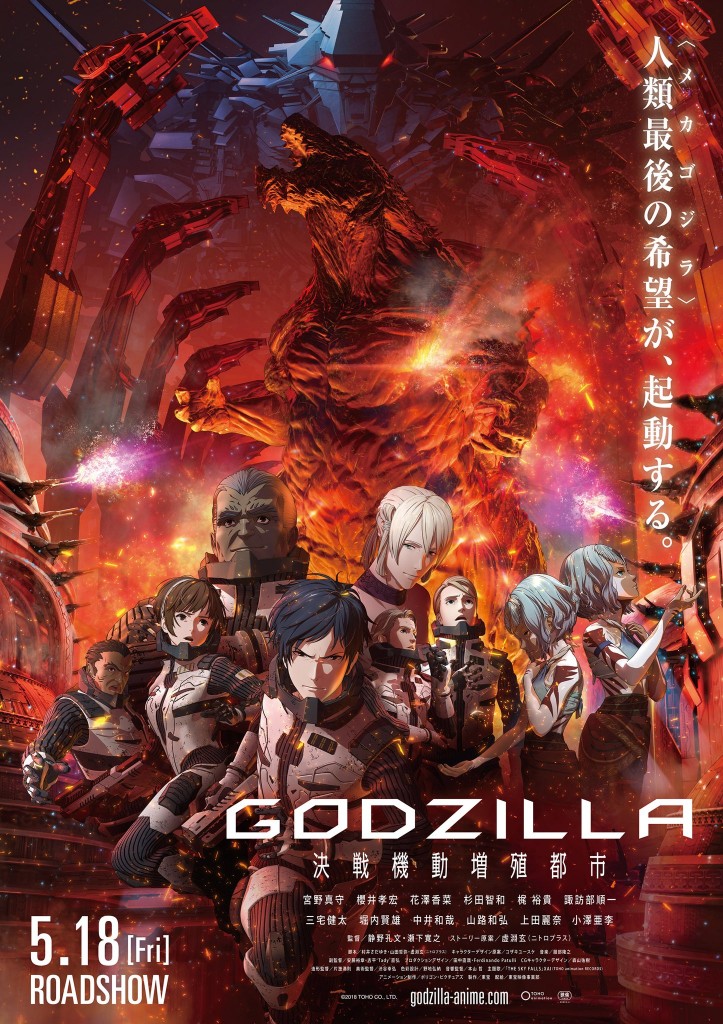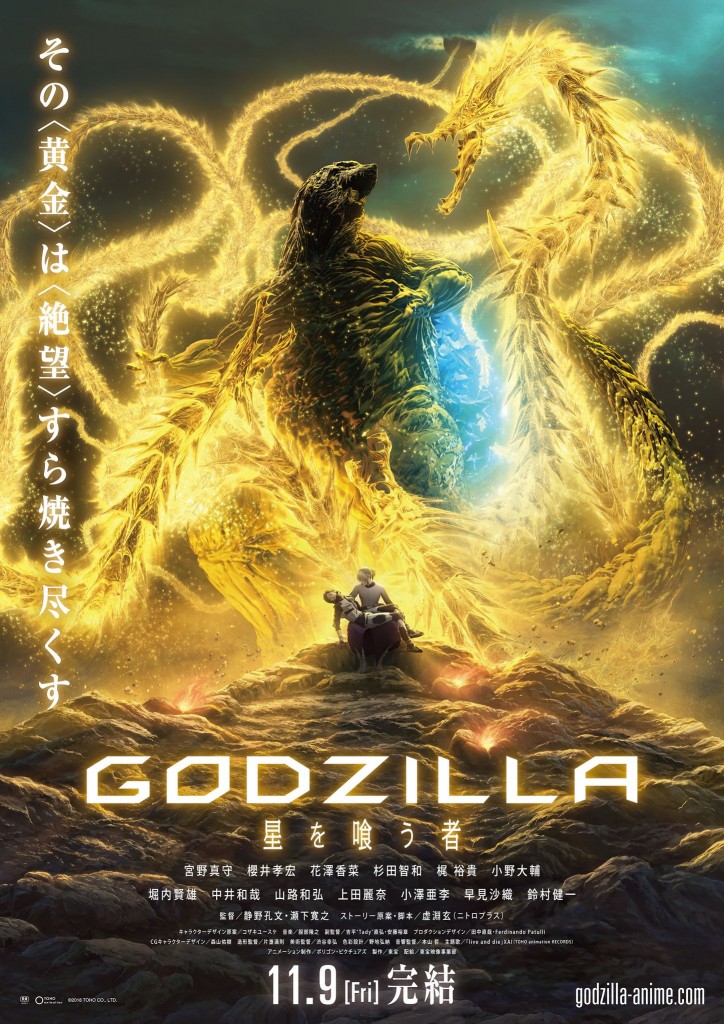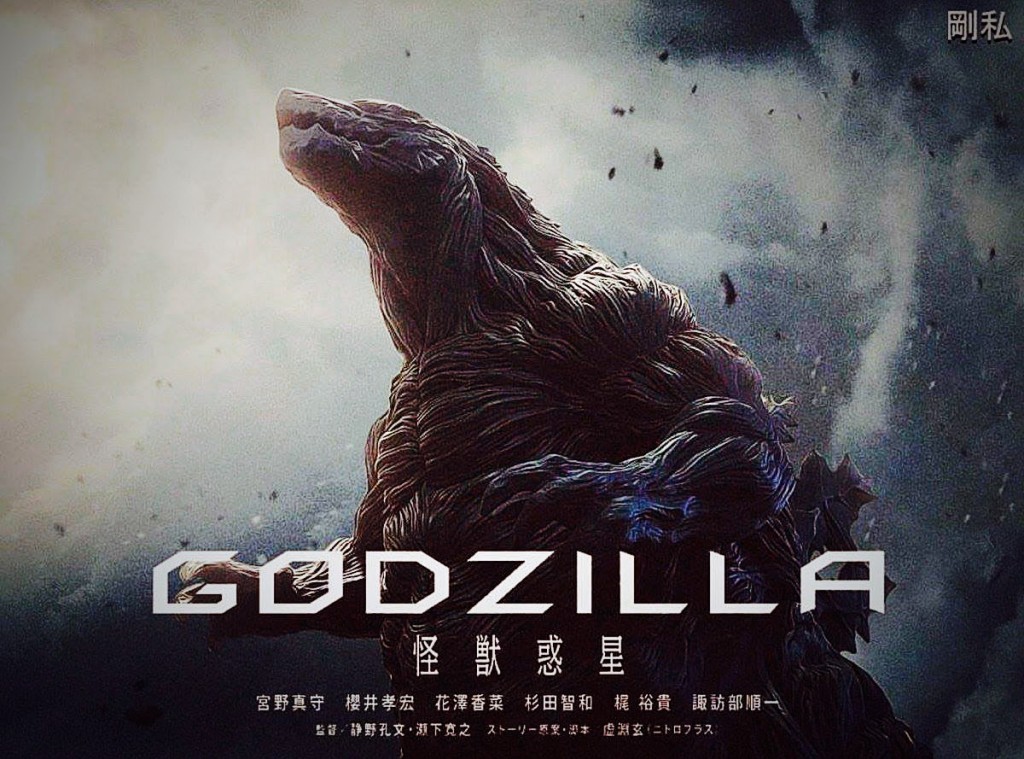 Last week was a significant one for the Big G. The first trailer for 2019’s Godzilla: King of the Monsters was unveiled at San Diego Comi-Con, displaying staggering scope and beauty set to the improbably perfect sound of Claude Debussy’s “Clair de lune.” Meanwhile, as fans salivated in anticipation of the next installment in the US Godzilla series after 2014’s Godzilla, the next Japanese Godzilla film made a quiet debut in North America via Netflix — Godzilla: City on the Edge of Battle (Gojira: Kessen Kido Zoshoku Toshi). It’s also a second installment: part two of a trilogy of animated Godzilla films from Toho Animation and Polygon Pictures that started with Godzilla: Planet of the Monsters.
Last week was a significant one for the Big G. The first trailer for 2019’s Godzilla: King of the Monsters was unveiled at San Diego Comi-Con, displaying staggering scope and beauty set to the improbably perfect sound of Claude Debussy’s “Clair de lune.” Meanwhile, as fans salivated in anticipation of the next installment in the US Godzilla series after 2014’s Godzilla, the next Japanese Godzilla film made a quiet debut in North America via Netflix — Godzilla: City on the Edge of Battle (Gojira: Kessen Kido Zoshoku Toshi). It’s also a second installment: part two of a trilogy of animated Godzilla films from Toho Animation and Polygon Pictures that started with Godzilla: Planet of the Monsters.
I was roughly satisfied with Planet of the Monsters. It explored the theme of Godzilla as a deity and introduced intriguing science-fiction concepts, but it never found a solid adventure throughline for its apocalyptic Earth setting and left the potential of an animated Godzilla largely unrealized. City on the Edge of Battle makes forward strides as it deepens its SF backstory, now freed from having to go through the set-up that was necessary in the first movie. But as a Godzilla film, it still doesn’t work, and this makes me wonder exactly who the movie is targeted at. Godzilla fans? Anime fans? Science-fiction fans not-otherwise-specified? The last group may be the most satisfied, but I predict general dissatisfaction all around.
For those who came in late (and there’s no way to keep up with this movie unless you’ve seen Planet of the Monsters), here’s how events stood at the conclusion of Part One:
The remnants of the human race, in exile among the stars after Godzilla drove them off the Earth, choose to return to their homeworld and attempt to reclaim it from the monster. Although twenty years have passed on the refugee spaceship the Aratrum, over twenty-two thousand years have passed on Earth. Over the millennia, Godzilla’s biology has radically altered the ecosystem into a bizarre and hostile environment. With the assistance of two humanoid alien races, the mystical Exif and the technological Bilusaludo, the humans mount an offensive to destroy Godzilla. The plan of young Captain Haruo Sakaki succeeds — then immediately fails when it turns out the monster they killed (Godzilla Filius) was only an offspring of the original Godzilla that ravaged the planet (Godzilla Asu, “Godzilla Earth”). The true Godzilla emerges, grown in size and strength over thousands of years to unimaginable power. So was the fight all for nothing?
…
Read More Read More


